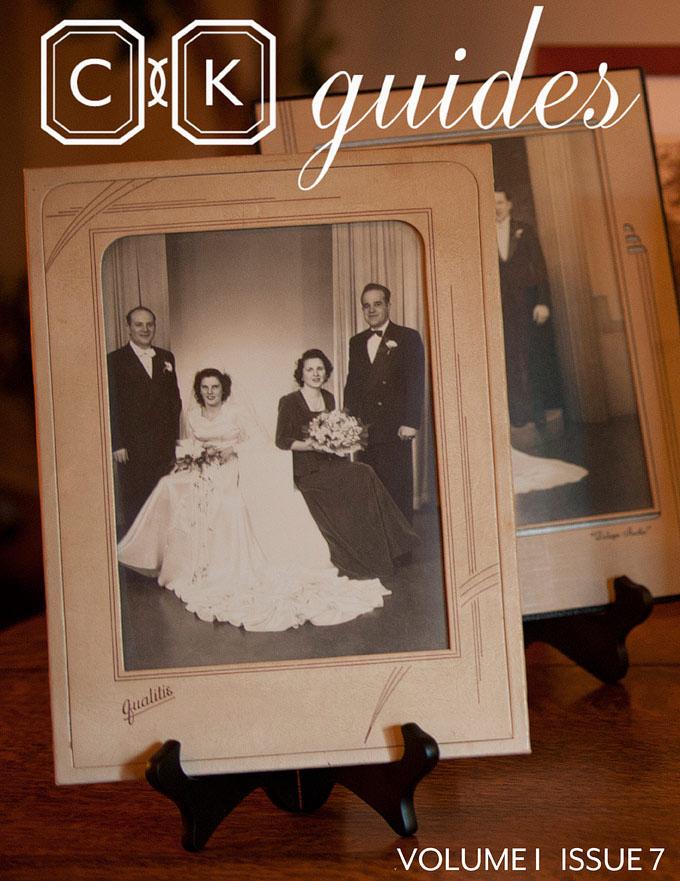Tips on how to Display Vintage Family Photos In Your Home or at Family Events

Old family photos are timeless. They tell us volumes about our family history, and about our family legacy. That’s why you should display vintage family photos in your home or at family events! Whether your old family pictures adorn a table at your wedding, or simply sit elegantly above your fireplace at home, there are a few key tips to ensuring they look beautiful!
Here are a few tips on how to display vintage family photos in your home or at your next family event.
1. Keep it simple.
Old black and white photos are timeless. They don’t need any adornment or fancy framing to make them beautiful. They already are. So select simple silver or wooden frames that keep the focus on faces in the photos. After all, that’s what makes them so special.
Here are a few lovely and simple silver frames, ranging from small-scale to large-scale:
• Restoration Hardware – Hampton Narrow Frames
• Pottery Barn – Silver Plated Frames
Here are wonderful wooden frames, ranging from modern to rustic:
• Ikea Ribba Frames
• Fab Frame Kits
• Instantly Framed – an app that enables you to quickly create frames for photos from your iPhone
2. Look beyond the frame
Frames aren’t the only way to display your vintage family photos. In fact, there are a lot of options out there that are unconventionally beautiful. Consider checking out alternative displays.
For example, Artifact Uprising makes wood block prints that are fabulous, functional “frames” without an actual frame. Sounds fascinating, right? And they are! You get all of the benefits of framing (showcasing photos front-and-center), in a conversation-starting material: beetle-kill pine reclaimed from Colorado forests. You could easily display these beauties on the tables at a rehearsal dinner, wedding or day-after brunch.
Custom letterpress studio, Farmwood Press, makes pretty paper frames for old family photos. They could be strung together horizontally along a wall, or used individually as table cards at a rehearsal dinner or wedding reception.
3. Curate carefully.
Choosing which vintage family photos to display can bring up some tricky family politics. Maybe there are certain photos that are associated with less-than-happy memories for family members? Be mindful making your selections – did you include each set of grandparents? What about your parents?
Since many of your family members will see these vintage photos prominently displayed, avoid any omissions that could cast a negative light on your family history. Nobody wants to see an aunt having a meltdown because she was left out, or perhaps someone who should have been cropped out is still there, staring out of an old photo.
4. Think theme, theme, theme.
When it comes to displaying old family photos, creating a THEME is key. Otherwise, the photos may look haphazard or oddly random. The obvious theme is weddings. And that’s fun, of course. Yet there’s more to the story; there are family parties, anniversaries and other milestone events that would be beautiful – and fun – to incorporate into your display.
For more fun ideas on elegantly displaying vintage family photos, check out the longer blog post we wrote for the talented team at Cameron and Kelly Studio.
 By Rachel LaCour Niesen, Steward of Stories & Founder of SaveFamilyPhotos.
By Rachel LaCour Niesen, Steward of Stories & Founder of SaveFamilyPhotos.
Rachel is a Yankee by birth but a Southern storyteller at heart. When a much-loved uncle gifted her with her first SLR camera, Rachel found her calling in photography. In pursuit of her passion, she headed to the University of Missouri, where she studied Photojournalism and Art History. Since then her work has appeared in publications such as the New York Times Magazine and the San Francisco Chronicle. Along with her business partners, she founded LaCour, a wedding photography studio based in Atlanta. As LaCour grew, the team co-founded ShootQ, a cloud-based business management application for photographers. In 2010, ShootQ was acquired by Pictage. When she’s not curating old family photos, she enjoys adventures with her husband and partner in entrepreneurship, Andrew Niesen.




No Comments